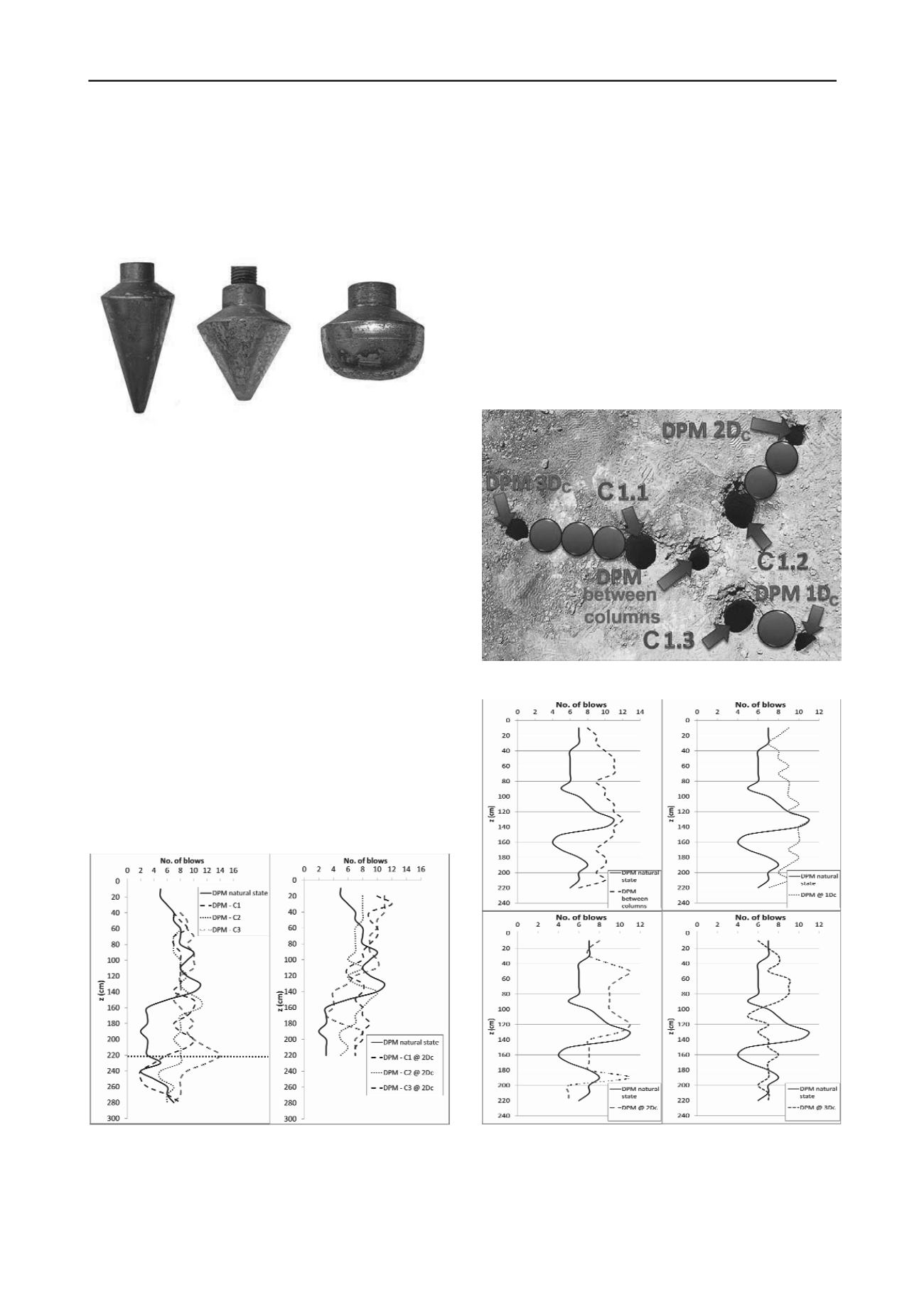
2435
Technical Committee 211 /
Comité technique 211
4
IN SITU TESTS
In-situ tests first aimed at identifying the effect of the cone
shape on: the rate at which the cone advances in the ground, the
tamping of the surrounding ground and the compaction degree
of the material in the column body. Three types of cones with a
diameter of 7 cm were made. (Figure 5).
Figure 5. Cones made: a) C1 – 30°; b) C2 – 60°; c) C3 – hemisphere.
4.1
Column execution technology
Collapsible soils improvement by soil columns is regulated by
normative C29 - 85. The experimental polygon met the column
execution methodology described in the normative but adapting
it to the equipment that has been newly proposed for their
execution (LMSR-Hk dynamic penetrometer).
Column execution steps are: column hole execution, filling
by fill material portions and fill material compaction until
rejection.
The fill material portion was set for a column with a
diameter of 7 cm and for a height of the compacted material of
21 cm (3 diameters), resulting 1,5 kg of material having optimal
compaction humidity.
Successive tests regarding the obtained compaction degree
indicated that rejection (compaction stopping) was reached after
an advance of maximum 7mm/blow.
4.2
Optimal cone shape
On the experimental polygon, columns were executed by using
the three types of cones. Figure 6a presents the blow number
variation per an advance of 10 cm in DPM tests performed in
the centre of the columns and Figure 6b presents the same tests
carried out at a distance of 2 diameters towards the column.
Figure 6. Results of DPM tests carried out in the centre of the columns
and at a distance of 2Dc (14cm) towards the columns.
In case of DPM tests carried out in the centre of the columns,
the results obtained were similar for all the columns. Therefore,
an optimal shape of the cone that leads to a better compaction of
the column body could not be found.
Then, for determining the cone with a wider influence
radius, DPM tests were carried out at a distance of 2Dc=14 cm
towards the columns. These tests indicated [as expected given
its shape (the smallest angle at the top)], that cone no. 1 (30
0
)
had the greatest influence on the tamping state of the soil
around the column.
The tests indicated that cone 1 shape (30°) was optimal for
soil columns execution.
4.3
Compacted loess columns
Therefore, 2 m long columns were executed, arranged as an
equilateral triangle network (Figure 7) with a distance of 3Dc -
21 cm
After finishing the group of columns, average dynamic
penetration tests were conducted both between the columns and
at different distances towards them.
between the columns.
Figure 7. Columns and DPM tests disposal.
mns; b) @ 1Dc;
Figure 8. DPM tests results: a) between the colu
c) @ 2Dc; d) @ 3Dc.
It may be observed that, at a distance of 3Dc near the
columns, the improvement effect has no longer been perceived
(Figure 8d). When the DPM test was carried out in the centre of
the column group (Figure 8a), the improvement effect recorded
an obvious increase.


